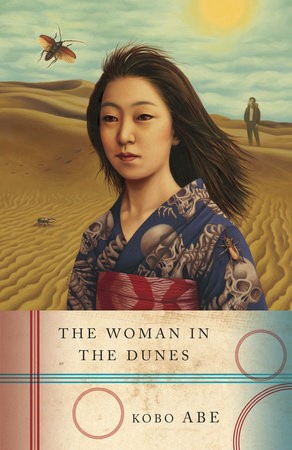Kobo Abe’s Breed of Surrealism
By Andreas Pratama
Kobo abe or Kimifusa Abe is a Japanese writer, poet, and play writer focused on looking deep into the structure of modern Japanese society. His tendency to reflect on life has surfaced ever since he read the likes of Franz Kafka, Heidegger, and Nietzsche. Looking up to these authors gave his writing a new breed of surrealistic influence particularly on the strange choices of his fictional character based on Andre Breton’s concept of anything that the mind brings up to mental clarity at random. This may include urges, images, or impulses, this is the psychic automatism.
Impulsive choices and desires are made symbolic in his books and writings. In The Woman in The Dunes Abe tells a story of a school teacher who comes to sand dunes by the seaside to research and collect sand critters. Throughout his journey researching there, he missed his bus home and was advised by the locals to stay overnight at a widow’s house. This particular widow who stayed in the sand dunes are quite peculiar, she is the very embodiment of someone stuck in the deep dunes waiting for her prey. The teacher had to oblige due to his condition. In order to reach the house, he had to be lowered down with a rope down into the house, the inclined surrounding of the dunes made this house appear as if it is being swallowed by the sands.

As time progresses the teacher realized that he can no longer escape the grasp of the sand dunes. His adversaries were no longer the locals that put him down, it is his urges to copulate with the widow and the romance that grew between them. On this point of the story it can already be sensed that Abe’s specialty as a writer emerged. Kobo Abe’s use of narrative and impulsive urges of human beings are put on display as to compare it to the priority of survival. It is here the teacher’s desire to exit the sand dunes are now replaced by his primal lusty instinct to remain. A reflection fitting in modern life especially in Japan: to remain in rigid structure, but when one exits that life, they are not actually free either from the shadows of their nation and identity that forces them to refuse their habitat.
Later in the narrative, The teacher had a chance to escape the dunes. The locals who lifted the widows out due to her late pregnancy forgot to sever the rope. The teacher then had a chance to raise himself up into freedom. Free from his initial bug research and confinements to the sand. His ticking mind thought of freeing himself up to survive, yet he may eventually discover his purpose. The story ends with a police report of the teacher being missing for 7 months. It was later suggested that he chose to remain in the dunes not to remain with the widow but to leave a solution for the others trapped in the same occurrence. His primary urge was not to seek freedom but to trap himself back in the dunes so that he may prevent others to fall prey into the engulfing sands.
This strange impulse such as opting for torture instead of freedom is the way literature provides us with surrealistic senses and impulses. It is like living a constant life being trapped in a feverish nightmare where nothing makes sense but the urge, oh dear urge, reverberate so hard that our rational intentions succumbs to the charm of the impulses. Such is the nature of surrealism that we commonly see in paintings and the movement. Supremacy of the subconscious over rational minds.
Comments :